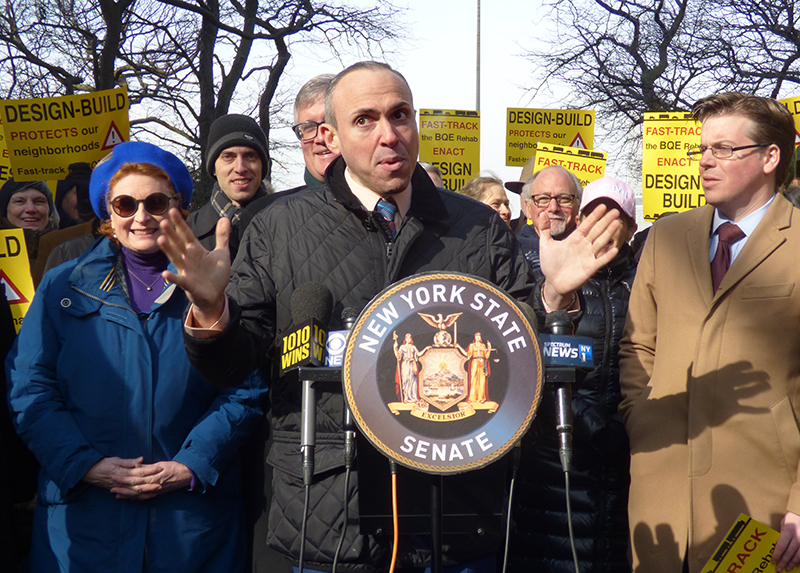‘Unacceptable rancor’ between Albany, NYC must stop before BQE traffic disaster strikes
Brooklyn officials seek to fend off ‘massive failure of government’

Brooklyn communities abutting the BQE will face local traffic calamities for years during reconstruction of Brooklyn-Queens Expressway (BQE) and roadway under the Brooklyn Heights Promenade if Gov. Andrew Cuomo and others in Albany do not intercede immediately to allow a fast-track contracting process.
Officials at a rally in Brooklyn Heights on Friday said they are working now to head off the looming crisis.
The seven-year reconstruction, already in the planning stage, must be completed by 2026. If it’s not, the city’s Department of Transportation (DOT) says it will likely have to divert 16,000 trucks daily from the highway onto local streets, causing jams that will reverberate from Brooklyn to Staten Island and Queens.

Brooklyn Boro
View MoreNew York City’s most populous borough, Brooklyn, is home to nearly 2.6 million residents. If Brooklyn were an independent city it would be the fourth largest city in the United States. While Brooklyn has become the epitome of ‘cool and hip’ in recent years, for those that were born here, raised families here and improved communities over the years, Brooklyn has never been ‘uncool’.